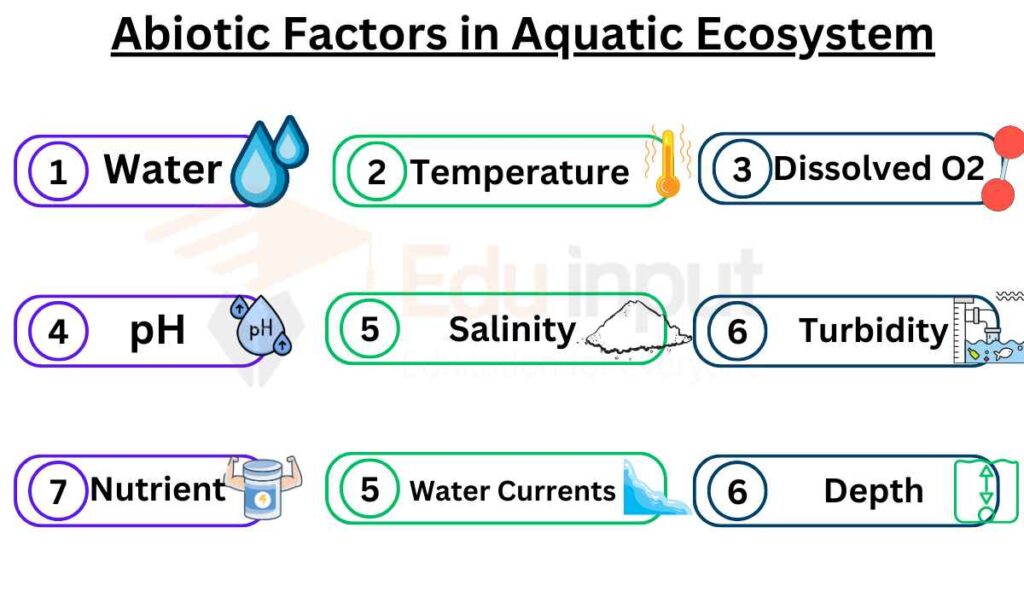Abiotic Factors in Aquatic Ecosystem
Abiotic factors in aquatic ecosystems include sunlight, temperature, moisture, water currents, soil type, nutrient availability, dissolved oxygen, pH levels, salinity, turbidity, depth, and substrate composition.

11 Abiotic Factors in Aquatic Ecosystem
Here are examples of abiotic factors in aquatic ecosystem:
1. Water
Water is the most important abiotic factor in aquatic ecosystems. It provides the medium for life. It serves as a habitat for organisms.
2. Temperature
Temperature has most crucial role in aquatic ecosystems as it influences the metabolic rates, growth, and overall physiological functions of aquatic organisms. Different species have specific temperature ranges within which they can survive.
3. Dissolved Oxygen
Dissolved oxygen refers to the amount of oxygen present in water, which is essential for the respiration of aquatic organisms. It is influenced by factors such as water temperature, turbulence, and the presence of aquatic plants.
4. pH Levels
The pH level measures the acidity or alkalinity of water. Aquatic organisms have specific pH tolerances, and changes in their preferred range can impact their survival and physiological processes.
5. Salinity
Salinity refers to the concentration of dissolved salts in water. It varies in different aquatic environments, such as freshwater, brackish water, and marine water. Aquatic organisms have varying degrees of tolerance to salinity levels.
6. Turbidity
Turbidity represents the clarity or cloudiness of water due to suspended particles. It affects light penetration, which, in turn, influences the growth of aquatic plants and the availability of food for other organisms.
7. Nutrient Levels
Nutrient levels, including nitrogen and phosphorus, are essential components for the growth of aquatic plants and algae.
8. Water Currents
Water currents affect the distribution of nutrients, oxygen, and organisms within aquatic ecosystems. They influence the physical structure of habitats and the dispersal of larval stages of many species.
9. Depth
The depth of water affects light penetration, temperature, and pressure. It influences the distribution of species and determines the availability of suitable habitats and resources.
10. Substrate Composition
The composition of the substrate, such as sand, mud, or rocks, provides habitats for various organisms. It affects the availability of shelter, attachment sites, and the presence of benthic communities.
11. Light Availability
Light availability is crucial for photosynthesis in aquatic plants and algae. It determines primary productivity, affects the growth of submerged plants, and influences the behavior and distribution of many organisms in the water column.

 written by
written by 




Leave a Reply